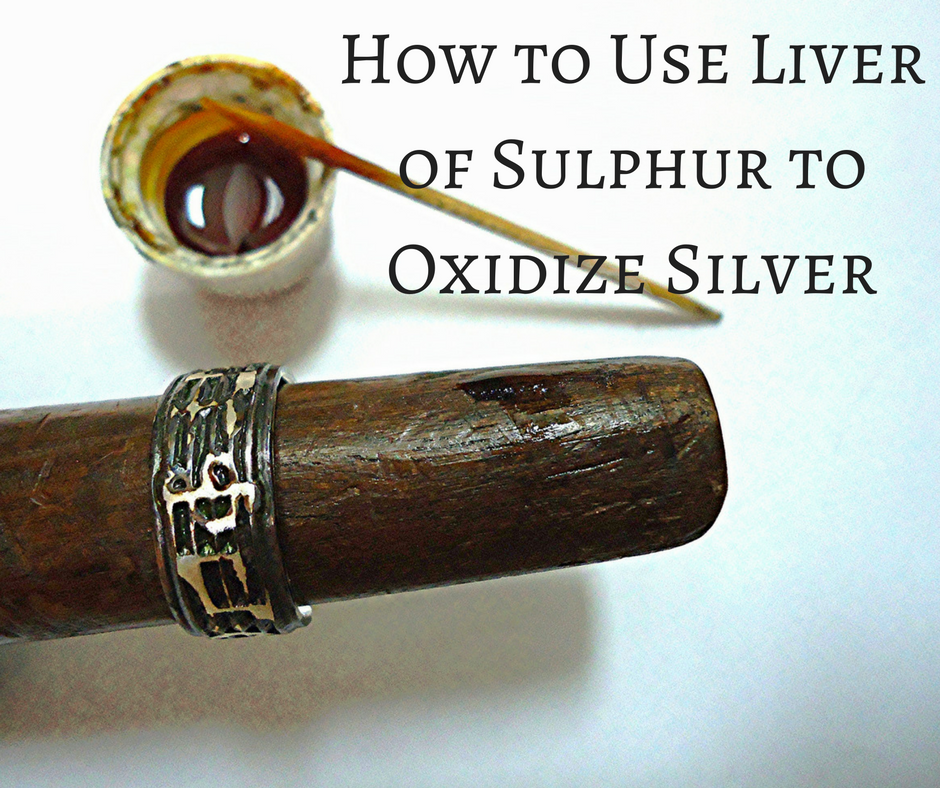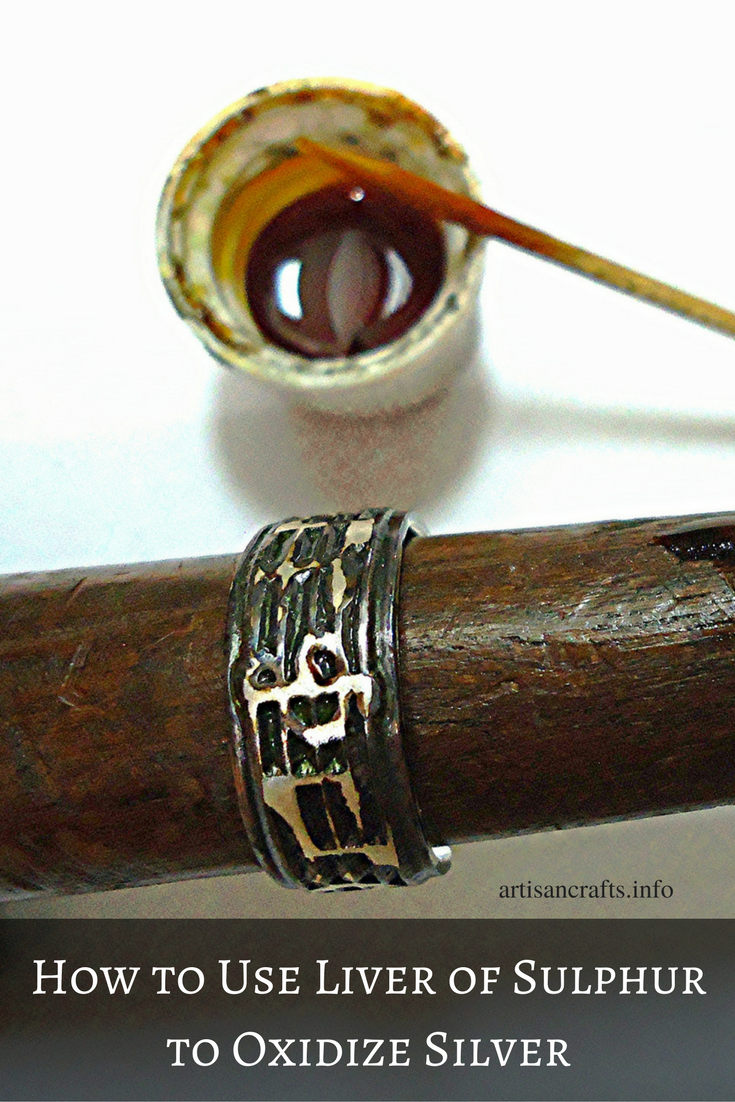Give Your Silver Finishes Ranging From Pale Yellow to Black
When a silver art or jewelry piece is ready to be finished, many artists like the results they can get by using liver of sulphur.
Liver of sulphur is a derivative of sulphur, that is used to antique silver. Liver of sulphur works well at antiquing any type of silver including Precious Metal Clay. When liver of sulphur somes in contact with silver, it oxidizes the silver much faster than the silver would oxidize normally in open air. The silver starts by turning a pale yellow color, then deepens into an orange gold, then red, blue, and purple and finally to black.
Buying Liver of Sulphur
While we are most familiar with the black oxidation of silver, all of the other colors can be made permanent finishes by learning how to work with the liver of sulphur. Liver of sulphur is actually very easy to work with, and with practice anyone can get the finish that they are looking for.
Buy Liver Of Sulphur from Delphi Glass or from Amazon below:
&
How to Get the Best Possible Results
After much experimentation, this is the way I use liver of sulphur to get the best results. You can use either the solid or the liquid version of liver of sulphur.
Fill two shallow bowls, one with the liver of sulphur solution, one with water. To get the best results, use room temperature or cool water. If you heat the water, the liver of sulphur will react faster to the silver, and that gives you less control.
Apply the Liver of Sulphur to the Silver Piece
You can dip the silver in the liver of sulphur or you can put the liver of sulphur on the silver. I usually dip my pieces using a fork or a slotted spoon to hold them. Dip them in and then out of the liver of sulphur to check the progress. The cooler the water is, the slower the color will change. When you think you are done, dip the piece in the clear water.
The clear water will stop the reaction of the liver of sulphur and the silver. Take a look at your piece. Are you satisfied? If so, you are ready for the next step. If not, go back and reapply.
If you completely hate the way the silver oxidation came out, you can reheat the piece in your kiln, and it will go back to fine silver color, and you can start all over again. It takes some practice to get the finish to end up exactly how you wanted it to be.
After Applying Adding the Fine Touches
After you have completed the liver of sulphur application, you have some choices to make. Do you want to keep the finish the way it is or add some nuances to it?
This depends on what you want the piece to look like. If your piece has a lot of texture in it, I recommend taking a silver polishing cloth, and hand polishing some of the ridges that stand out from your piece. This will rub some of the liver of sulphur off that part of the piece creating light and shadow effects.
Protect Your Finish
Once your silver piece looks exactly the way you want it to, you need to protect the finish. To protect the finish, use a solution of beeswax that has been softened with naptha. Both of these can usually be purchased at a hardware store. Naptha is toxic, and a solvent so keep your beeswax solution in a glass jar. You only need a very small amount.
The naptha will liquify the beeswax. Take a very cheap paint brush and apply a thin coat of beeswax to the silver. Let it sit for about 30 to 60 seconds, then rub it off with a paper towel or a rag. You will leave behind a very thin coating of wax that cannot be seen but will protect the finish.
This is the Kind of Beeswax to Buy – You need to use white beeswax
White beeswax is the best because it is colorless. It is cheap and does not go bad, so you can always have it on hand.
1-lb Pure White BEESWAX Pellets
&
Naptha to Soften and Liquify the Beeswax – A quart will last you a long time
Naptha is a solvent like turpentine. It needs to be kept in a metal or glass container.
SUNNYSIDE CORPORATION 80032 1-Quart Naphtha
&
Image CC 2.0






Leave a Reply